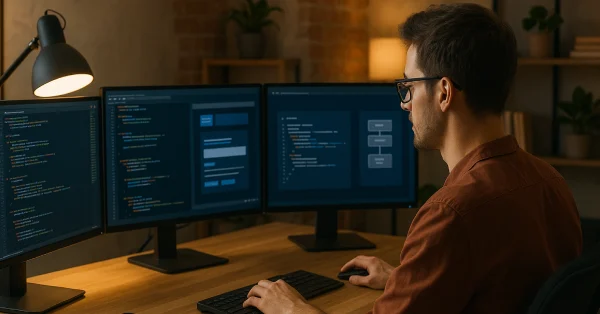Expert Tips to Get the Most from Python Full Stack Training
Becoming a full stack developer is one of the most rewarding career moves in today’s digital era. With Python leading the way as one of the most popular programming languages, many aspiring developers are enrolling in Python training programs to build complete web applications—from frontend interfaces to backend systems. However, to truly excel, it’s important to know how to make the most of your training journey.
In our previous blog, we explored the differences between Python-based full stack development and the MERN stack, breaking down which option suits different career paths and project goals. Building on that foundation, today’s article shifts focus toward helping you make the most of your Python full stack learning journey — with practical strategies, proven tips, and a roadmap to becoming a job-ready developer.
Smart Learning Tips for Success in Python Full Stack Training
To get the most out of your training, focus on a practical, hands-on approach. Success in full stack development isn’t just about attending lectures or watching tutorials—it’s about consistent practice, problem-solving, and applying what you learn in real-world projects. When you develop the right mindset and learning habits, your training experience becomes more productive and rewarding.
Here are some expert tips to help you maximize your learning and become job-ready faster.
-
Strengthen Your Python Fundamentals
A solid foundation in Python is essential before you dive into frameworks like Django or Flask. Focus on understanding basic programming concepts such as data types, loops, functions, and object-oriented programming. Strong fundamentals make it easier to grasp more advanced topics later in your learning path.
-
Learn by Building Real Projects
Theory alone won’t make you a skilled developer. Apply what you learn by building small, practical projects. Start with simple applications like a to-do list or portfolio website, then progress to more advanced projects like an e-commerce platform or blog system. Real-world coding experience helps you understand how frontend and backend components work together.
-
Get Comfortable with Frontend Technologies
A successful full stack developer must know how to create seamless, user-friendly interfaces. Learn HTML, CSS, and JavaScript alongside your Python backend training. Frontend frameworks such as React or Angular are also valuable additions that can make your profile stand out to employers.
-
Explore Databases and APIs
Understanding how data is stored, retrieved, and managed is crucial. Spend time learning SQL and NoSQL databases like PostgreSQL and MongoDB. Also, learn how to work with APIs—these connect the frontend and backend to create fully functional web applications.
-
Practice Version Control
Version control systems like Git are essential in professional environments. They allow you to collaborate with teams, manage updates, and track changes in your code. Regularly pushing your projects to GitHub not only helps you practice but also builds an online portfolio that impresses recruiters.
-
Learn Deployment and Hosting
Knowing how to deploy your projects is a game-changer. Use platforms like Heroku, AWS, or DigitalOcean to host your applications. Learning the basics of cloud hosting and server management gives you a competitive edge in today’s job market.
-
Choose the Right Learning Path
Enrolling in a Python full stack course from a reputed institute ensures structured learning and mentorship. The best programs combine theory with practical assignments, career guidance, and portfolio-building support, helping you transition smoothly into professional roles.
-
Stay Updated with Industry Trends
Technology evolves rapidly. Keep an eye on new tools, frameworks, and updates within the Python ecosystem. Reading blogs, following developer communities, and joining online discussions can keep your skills current and relevant.
-
Keep Expanding Your Skill Set
Once you’re comfortable with Python and web development, explore related technical courses like data analytics, DevOps, or UI/UX design. Adding complementary skills enhances your versatility and opens up more career opportunities across different domains.
Conclusion
Excelling in Python full Stack training takes consistent practice, curiosity, and the right guidance. By focusing on projects, staying updated with technology trends, and learning from experienced mentors, you can confidently step into a high-growth tech career.
If you’re ready to start your journey and become an industry-ready full stack developer, get in touch with our team today to learn more about our upcoming training programs.






